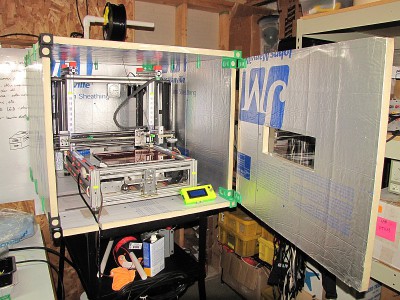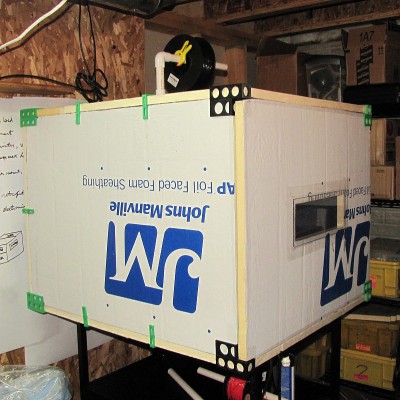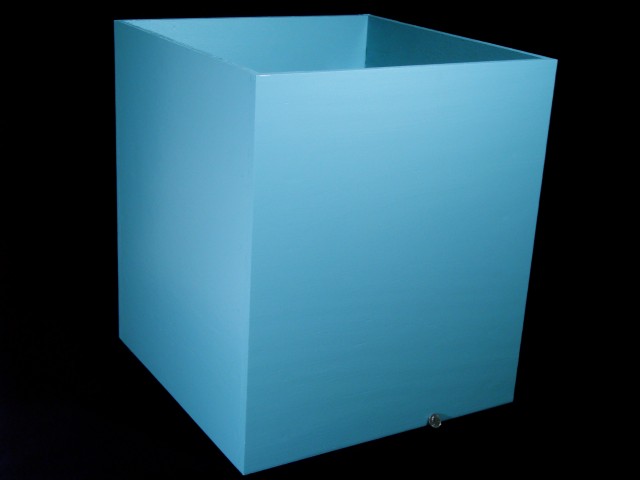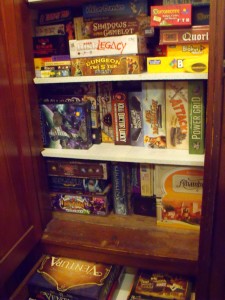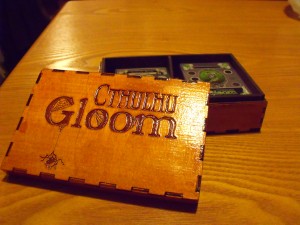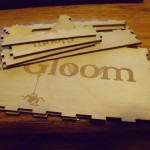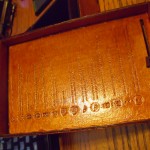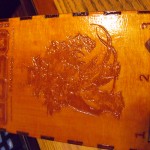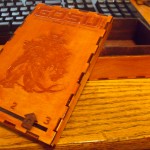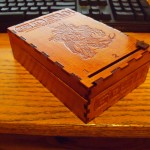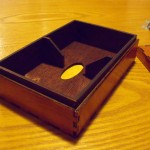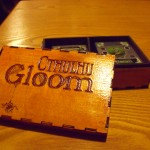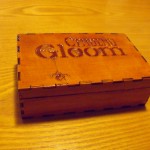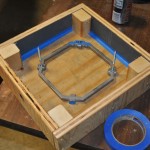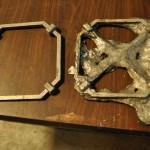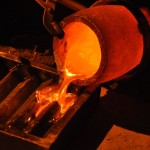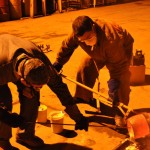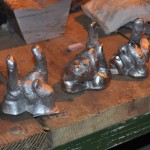This week I attempted the first test of the chocolate printer cooling system. The cooling system is intended to solidify the chocolate just after it leaves the extruder nozzle so that by the time the next layer is started it will have a solid layer to sit on. The cooling system consists of a centrifugal blower with a brushless DC motor blowing room air into a styrofoam cooler containing a block of dry ice. The air passes over the dry ice and gets chilled as the dry ice sublimates directly into very cold CO2 gas. The chilled air and CO2 mixture exit the box through a port with a hose that will ultimately blow the cold air on the chocolate. At least, that’s how it is supposed to work. It blows air at -12C as measured via a thermocouple, but unfortunately, the air exit port ices up in about 2 minutes and blocks the air flow.
There are many possible solutions. I can add a heater to the exit port to prevent formation of ice, or dry the air going into the box using a dessicant cannister or maybe just use water ice instead of dry ice if the higher temperature will still cool the chocolate adequately. Maybe using an old miniature freezer with an air hose coiled inside would do the job. It would be really interesting if I could use the waste heat from a freezer to keep the chocolate liquified and flowing. Back to the drawing board!
